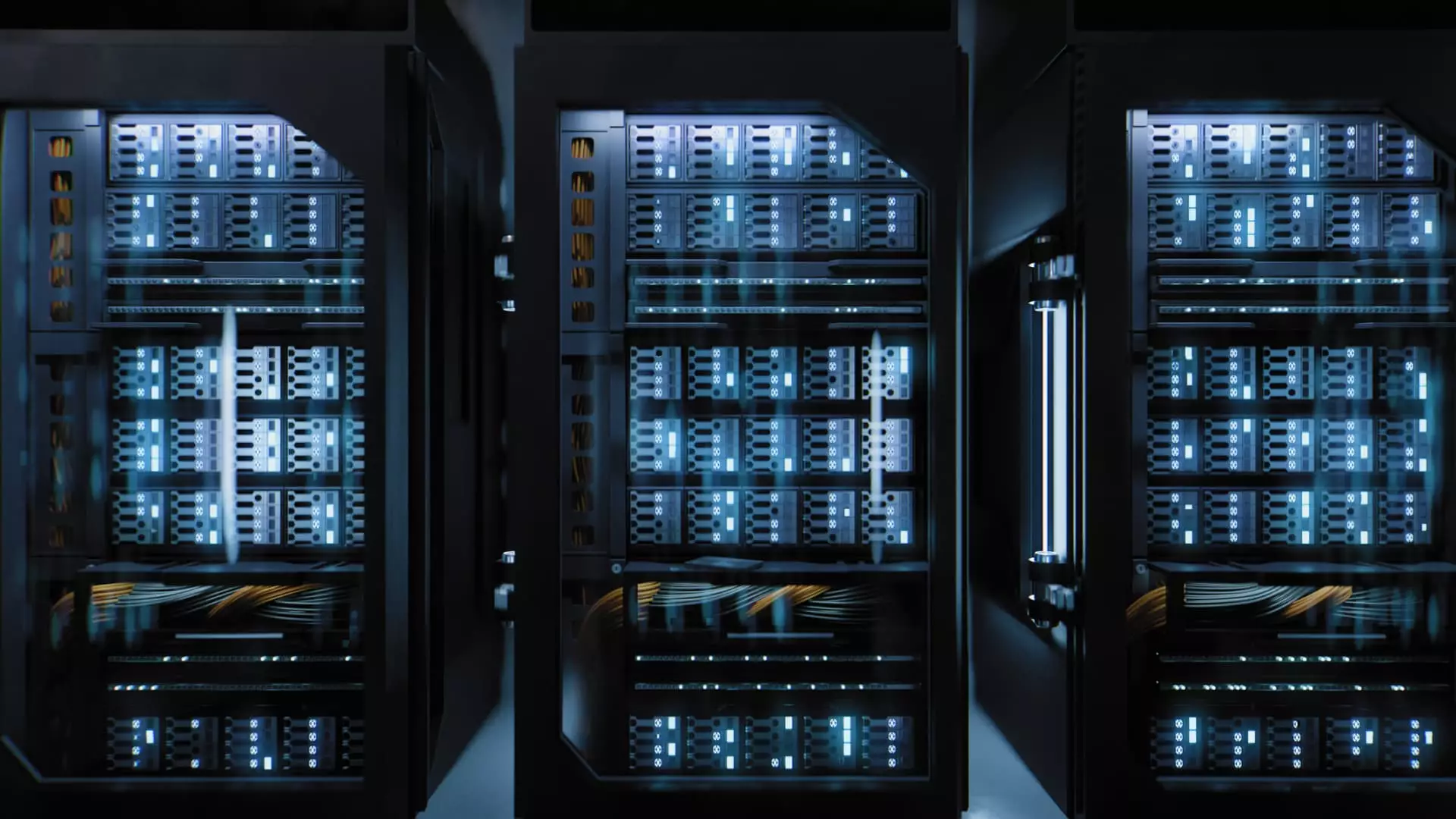The rapid evolution of artificial intelligence (AI) is transforming various sectors, yet its integration comes with significant challenges, particularly concerning energy consumption and environmental sustainability. According to a report by Goldman Sachs, the demand for data centers is projected to skyrocket by 160% by 2030, largely fueled by the needs of AI technologies. This shift poses a dilemma for European developers who are under mounting pressure to adapt their facilities. As AI algorithms require increasingly powerful chips—particularly graphics processing units (GPUs)—the heat produced necessitates more innovative cooling solutions, prompting the reevaluation of traditional energy strategies within data centers.
AI data centers, especially those employing cutting-edge GPUs like Nvidia’s Blackwell GB200, consume unprecedented levels of energy, with estimates suggesting up to 120 kilowatts per square meter. This staggering figure is comparable to the energy consumption of 15 to 25 houses within the same area. As GPU technology advances, these chips generate considerable heat, which presents a challenge for maintaining optimal operational temperatures. The conventional methods of cooling may no longer suffice, necessitating the exploration of alternative cooling solutions, such as liquid cooling systems that can operate efficiently at higher temperatures.
However, the demand for reduced water temperatures from U.S. chip designers complicates the landscape further. The European Data Center Association (EUDCA) has warned that such requirements could push Europe back into outdated and unsustainable practices reminiscent of issues faced decades ago.
As Europe strives to meet ambitious energy consumption goals—aiming for an 11.7% reduction by 2030—the projected energy consumption of data centers raises eyebrows. The European Commission had previously forecasted a 28% increase in energy usage by 2030, but the unique demands of AI could push this figure even higher, potentially two or threefold in certain regions. This places data centers in a precarious position, forcing stakeholders to balance the urgent need for advanced technological infrastructure against sustainability efforts.
Michael Winterson, chair of the EUDCA, articulates a clear conflict: lowering water temperatures to meet AI’s cooling needs contradicts the EU’s Energy Efficiency Directive. The directive mandates greater transparency in power consumption for data centers, emphasizing the necessity for energy management and efficiency.
Data center operators in Europe are acutely aware of the mounting pressure to innovate while remaining compliant with stringent sustainability standards. The complexity of integrating high-powered GPUs into existing systems calls for investment in more effective cooling methods and energy-efficient infrastructure. For instance, while liquid cooling systems have been touted as one solution, the initial capital expenditure required for reconfiguring these facilities might pose a significant hurdle in the early phases of implementation.
Companies such as Schneider Electric are playing a crucial role in facilitating discussions between stakeholders and regulatory bodies regarding energy sources, equipment enhancements, and the overall efficiency of operations. The interaction between the European Commission and firms like Nvidia underscores the urgency of aligning energy consumption controls with the innovation demands posed by AI technologies.
A Collaborative Approach: Seeking Sustainable Solutions
As the data center industry adapts to these changes, collaboration between tech companies, equipment manufacturers, and regulatory bodies emerges as a vital strategy. Organizations are exploring sustainable power options and effective utilities partnerships to mitigate the environmental impact. These collaborations encourage information sharing, expedite technological advancements, and ultimately aim to align the competitiveness of the European data center market with its sustainability objectives.
Companies like Nebius, which are set to leverage Nvidia’s latest GPU technology, exemplify the proactive approach required. They plan to invest substantially in AI infrastructure, making $1 billion commitments by mid-next year. Such initiatives illustrate a growing recognition within the industry that achieving energy efficiency and sustainability will be paramount as demand for AI capabilities intensifies.
The intersection of AI growth and data center operations presents multifaceted challenges for Europe. While the demand for energy-efficient and reliable cooling solutions is intensifying, the drive to lower overall environmental impact cannot be overlooked. Innovation in cooling technologies, a commitment to transparency in energy consumption, and proactive collaboration among industry players will be critical to navigating this evolving landscape.
As stakeholders work diligently to align technological advancement with sustainability goals, the future of European data centers remains uncertain yet filled with potential. The coming years will undoubtedly test the industry’s resolve to balance capacity expansion with environmental responsibility in this AI-driven era.


Leave a Reply